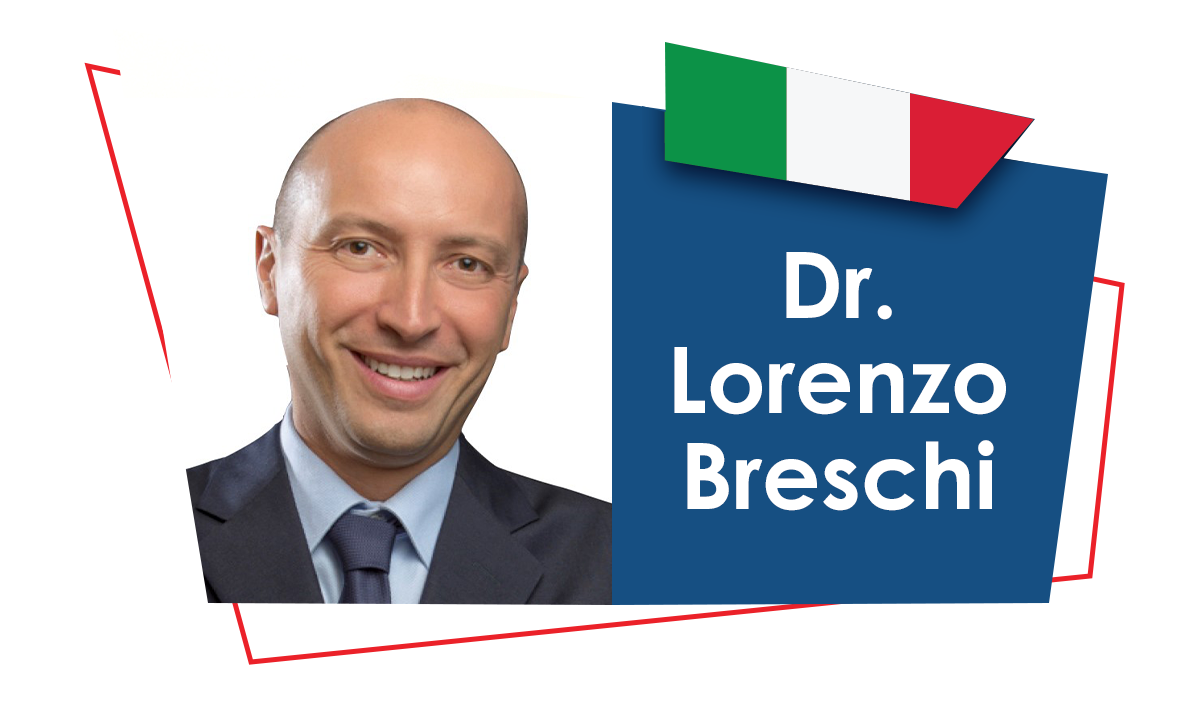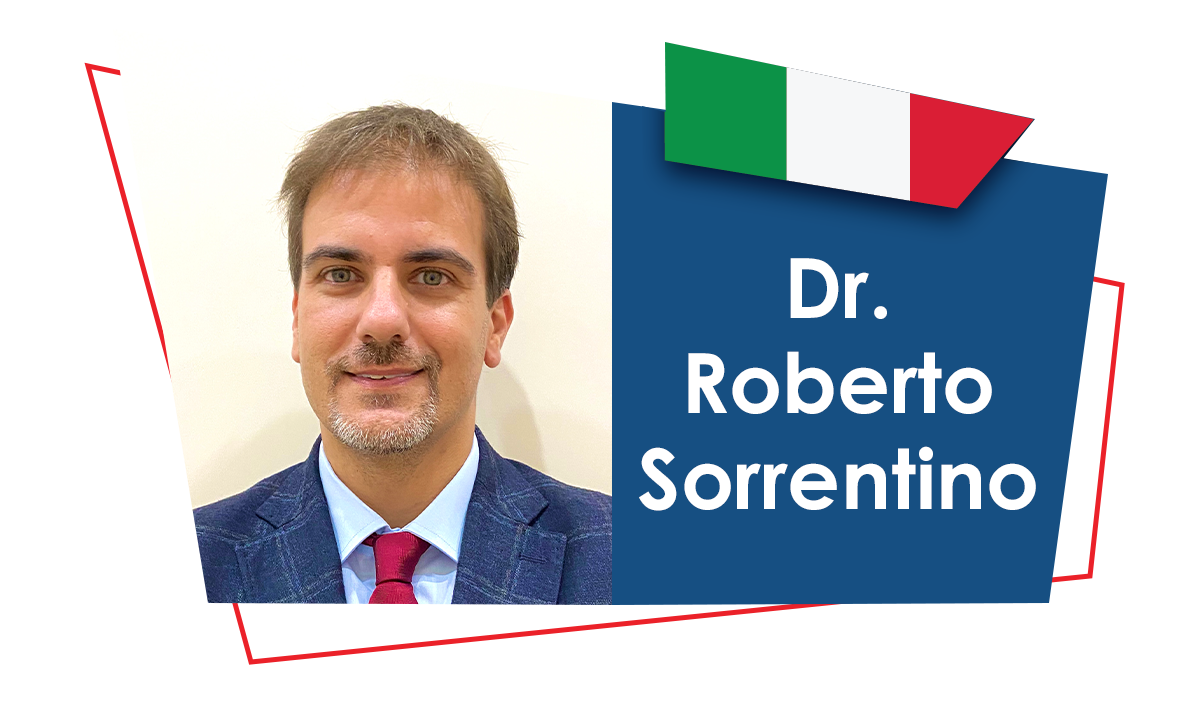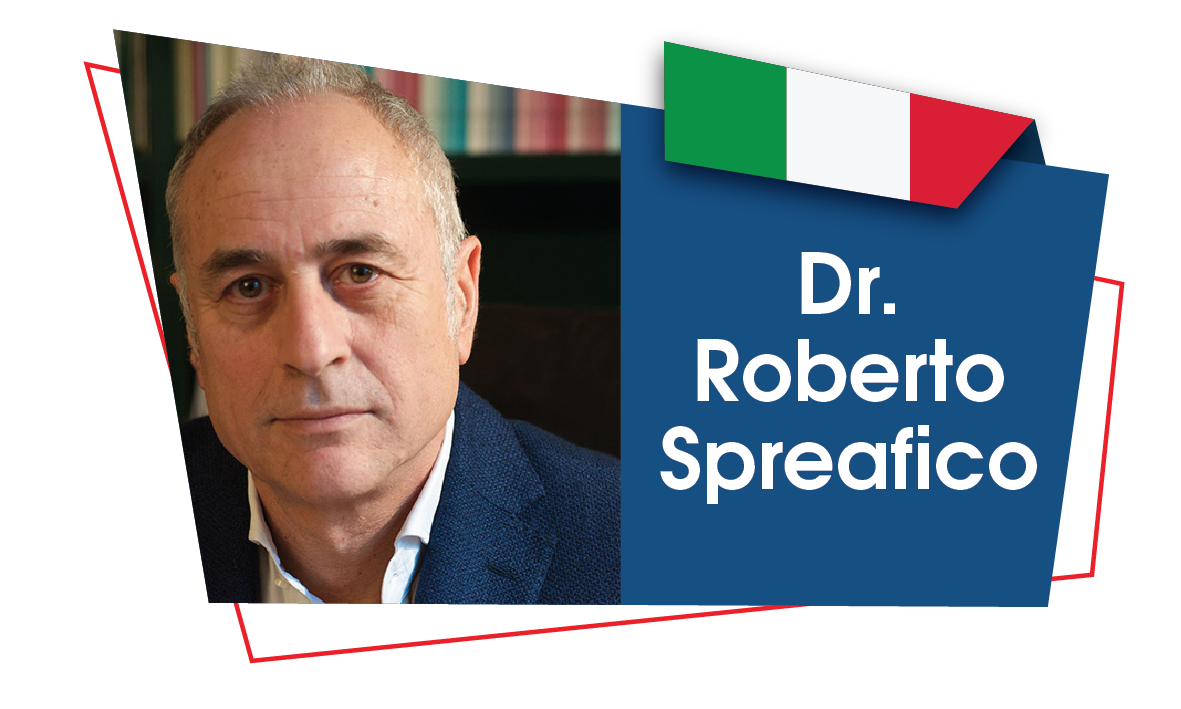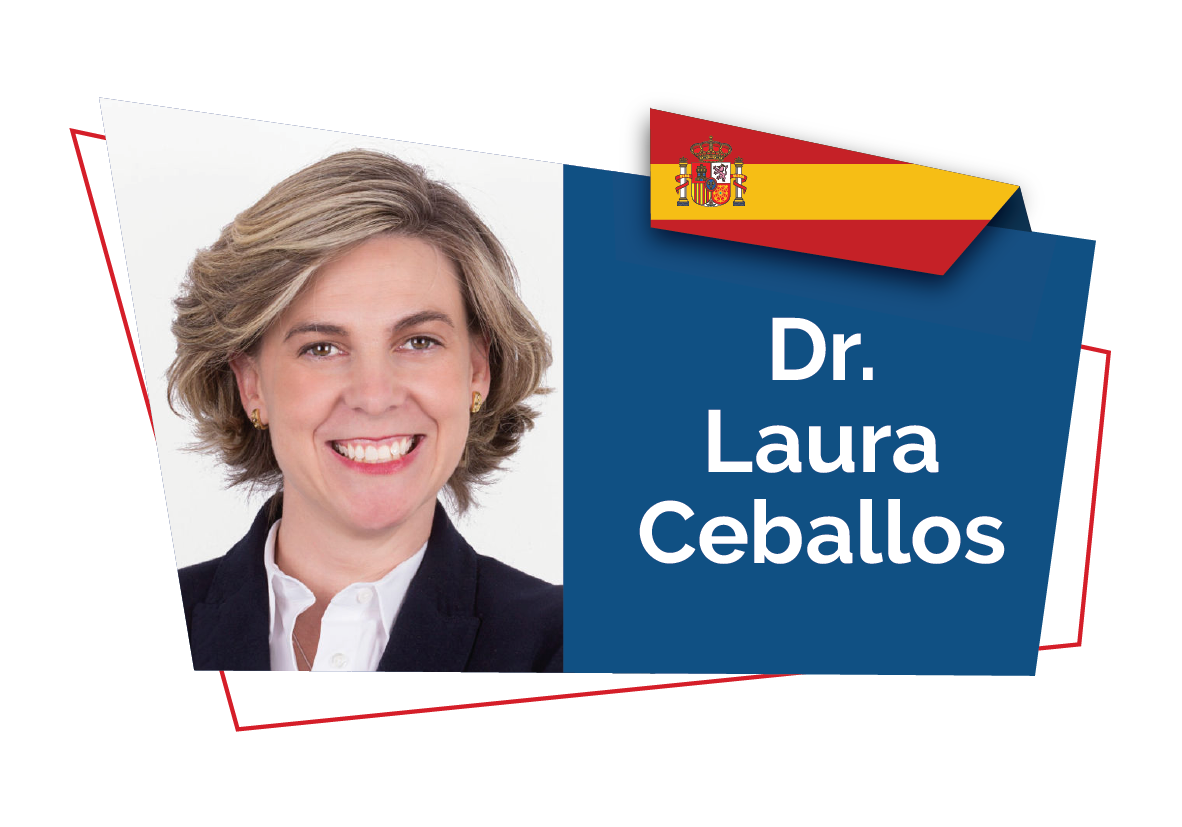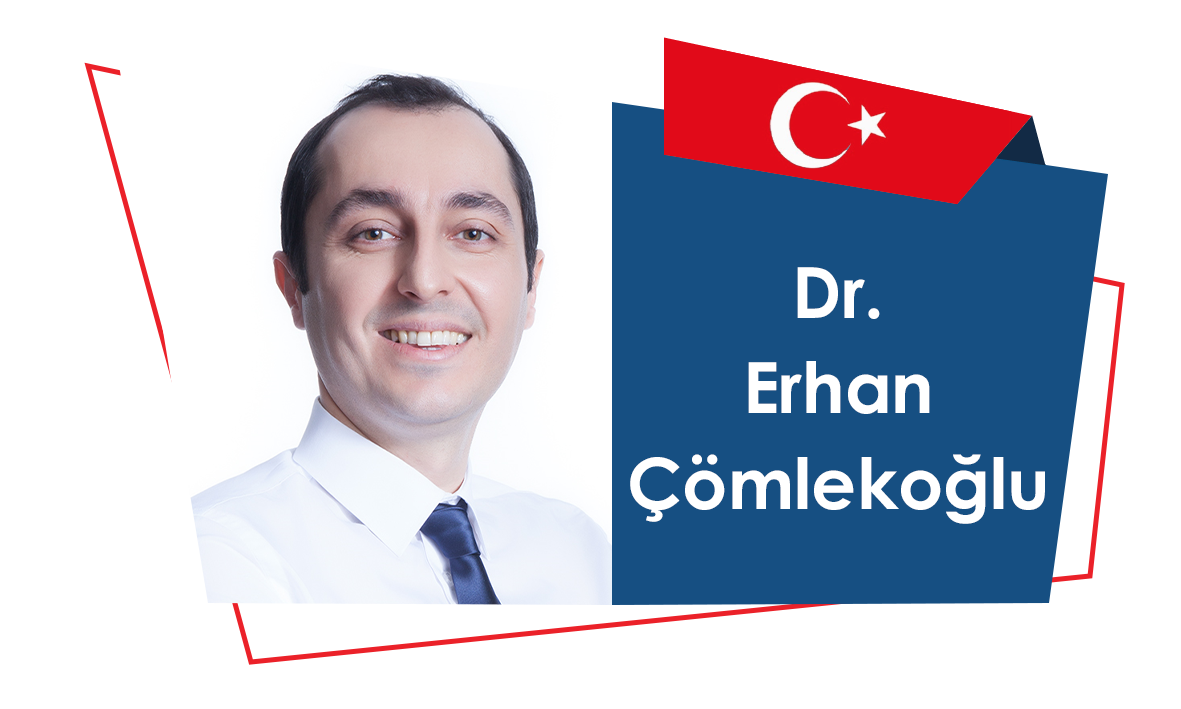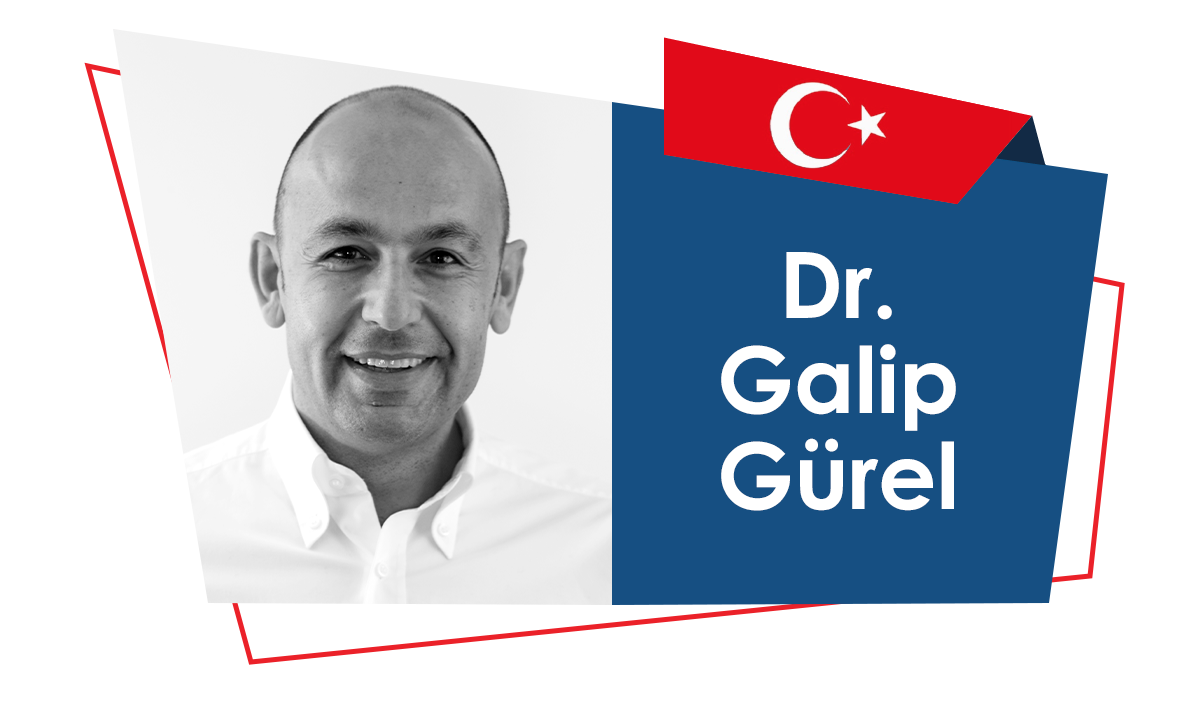



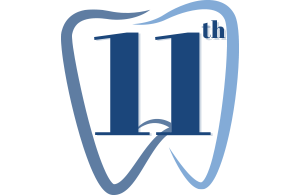















Dear Colleagues,
The European Federation for Conservative Dentistry (EFCD) and the Turkish Society of Restorative Dentistry (RDD) in collaboration with the Turkish Academy of Aesthetic Dentistry (EDAD), are jointly organizing the next ConsEuro conference which will be held in Antalya, Turkey between the 21st and 23rd of April 2022.
ConsEuro is the biennial congress of the EFCD where researchers and clinicians from European countries have the opportunity to learn about the state of art in Conservative Dentistry and present their latest scientific research. The topic of the 11th ConsEuro congress is “Maximum outcome-minimum intervention”. For this exciting topic and exceptional meeting, EFCD, RDD and EDAD have invited more than 20 prestigious clinicians, researchers, and experts from all over Europe and Turkey to present their research in the field of Conservative Dentistry, with a special focus on minimum intervention.
We are hoping that this year’s ConsEuro congress will be in the form of a ‘face-to-face’ conference. However, as the world is facing a very difficult period with COVID-19 and the global situation may chance at any time, the concept of the congress may change on a hybrid way if it happens to be necessary.
I would like to invite you, on behalf of the EFCD, to be part of our face-to-face Congress that will be held in a cosy atmosphere in an ‘all-inclusive’ hotel very close to the sea. This will be a unique and exciting experience that you must live! We are convinced that this event will promote international exchange on the latest technologies, innovative materials and concepts offering a unique opportunity to discuss all these in the comfort of our hotel.
A wonderful congress is ahead of us, and we do not want to make it without you.
Sincerely yours


Currently, wear of teeth seems to be a growing problem for both young and old, and spans from localized anterior wear to a more general condition involving the whole dentition. Non-physiological and pathological wear may require restorative treatment out of concern for biological perspectives, though most often to accommodate a patient’s aesthetic needs. These kinds of treatment have often involved extensive prosthetic reconstructions with immense implications for the pulp, the marginal periodontium and not at least the patient’s economy. Today, adhesive technology has allowed for restorative solutions that, following non-invasive additive principals, may be adapted to the teeth and the individual patient’s need.
Different clinical cases with and without increasing the vertical dimension of occlusion and orthodontic pre-treatment will be presented and focus given to reconstructions where non-invasive adhesive treatment with direct resin materials is used.
Ulla Pallesen graduated from the University of Copenhagen, Denmark, where she also has conducted her research and teaching carrier. She has held several positions at the university for the past 40 years, now she is Associate professor at the Institute of Odontology, Section of Cariology and Endodontics, where she is director of the pre- and postgraduate clinical education in restorative dentistry. Ulla Pallesen’s research includes longitudinal clinical studies on composite resin restorations as well as bleaching methods. She has published up to 30 years clinical results of longevity of posterior resin restorations. She is also a clinician and topics such as ethics and non-invasive treatment in dentistry have her special interest. She has published more than 100 articles in peer-reviewed international and Scandinavian journals and textbooks and she has given lectures all across the globe. She is member of international and national dental societies and has during the years received several rewards.
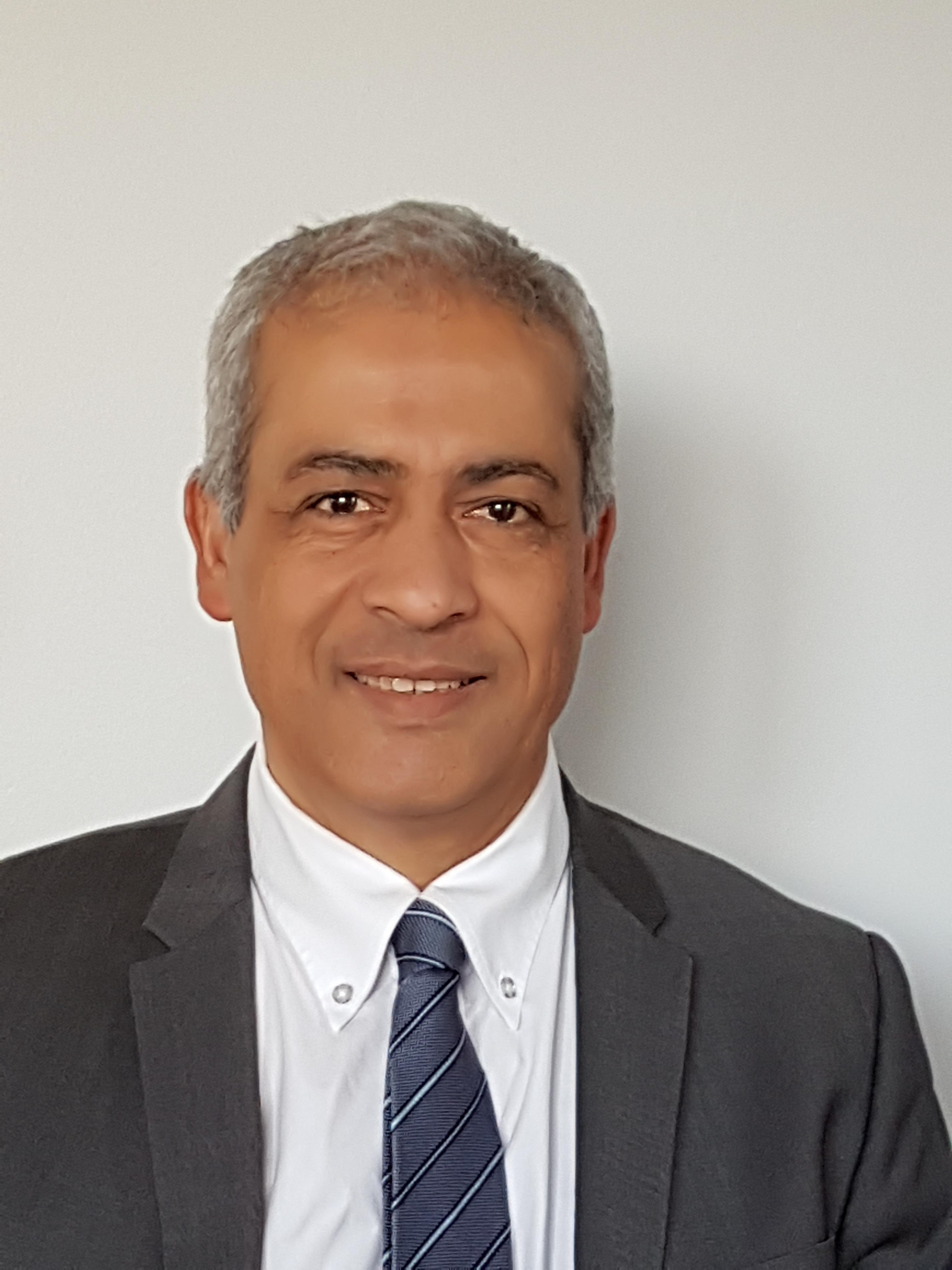
Due to their chemical, physical and bioactive properties, tricalcium silicates are now considered as the materials of choice for vital pulp therapy. In addition to the hermetic seal, they provide once applied onto the pulp, newly reported data demonstrated that they have an anti-inflammatory potential which creates the adequate conditions for dentin-pulp regeneration and successful clinical outcome. Moreover, the recently demonstrated pulp capacity to kill cariogenic bacteria, contributes to our understanding of the materials successful use in dental trauma and irreversible pulpitis treatment.
This presentation will demonstrate the pulp regeneration potential and its capacity to kill cariogenic bacteria. It will explain the main Biodentine properties and byproducts, show its anti-inflammatory potential and the added value in vital pulp therapy.
Imad ABOUT was born in Nablus, Palestine. He obtained a PhD in Biochemistry from Aix- Marseille University, France in 1992. After a post-doc at the National Institute of Health and Medical Research-France, Imad ABOUT joined the Faculty of Dentistry, Marseille as assistant professor in 1996. Imad About is currently Professor of Oral Biology at Aix-Marseille University and responsible of the research Laboratory at the faculty of dentistry, Marseille, France.
His research group is involved in investigating the role of stem cell micro-environment in tissue regeneration and the effects of pulp capping materials on modulating the balance between pulp inflammation and regeneration.
Professor About is actively involved in developing new dental materials for tissue regeneration and he is one of the main academic members involved in Biodentine development.
Imad About is Associate Editor of Clinical Oral Investigations, President of the Continental European Division and Past-President of the Pulp Biology and Regeneration Group of the International Association of Dental Research.
He is a well-recognized expert in pulp stem cells and tissue regeneration. He published more than 220 peer reviewed papers, abstracts and book chapters. He also edited a book on Biodentine in 2021. In recognition of his investigations in pulp biology, Imad About has been awarded the “Distinguished scientist award” of the Pulp Biology and Regeneration Group in 2018.

Minimal intervention dentistry is now accepted for caries management. How and when to intervene using non-invasive, micro-invasive and invasive techniques according to the patient's individual caries risk and the caries activity are the main factor. First, at each treatment steps: Non-Invasive, Micro-Invasive, or Invasive, it raised questions about how to clean without damaging, how to disinfect the deep dentine layers, when to promote the use of ions released biomaterials. The presence of surface cavitation is the starting point for micro-invasive restoration, caries activity is a warning sign to reverse or to moderate the caries process thanks to ions released biomaterials and cleanability is a moderating factor. More in case of proximal lesions presence or not of bondable enamel in gingival margins completely modified the biomaterials choices. In case of initial, moderate, or extensive occlusal cavitation, the clinical criteria include the individual caries susceptibility, the carious lesion activity, and lesions accessibility. The objective learning of this lecture will discuss the use of Ions released biomaterials with an unconventional angle, in case of Initial, Moderate and Extensive carious lesions.
Pr. Hervé Tassery has received his PhD in biomaterials from Aix Marseille University 2001. Currently, he is professor and past head of the Restorative and Preventive Department of Marseille Dental School at Aix-Marseille University. His major fields of interest are in cariology, fluorescence devices, minimally invasive dentistry, and clinical research. Working in the Laboratory of bio-nanotechnology of Montpellier 1 University, (EA 4203), head of the Team Biophotonic and Dental Diagnosis, his actual research interest, lies in improving the links between fundamental researches, clinical researches and clinical applications. For more details, please links to: https://www.researchgate.net/profile/Herve_Tassery/
Direct composites have become increasingly popular as tooth-colored restorations in almost any dental office around the world. Clinicians need to fulfill their patients` increasing expectations regarding esthetics, functionality and durability for both anterior and posterior direct composite restorations.
At the same time, the clinical procedures need to be carried out in the most efficient way in order to optimize the revenue – without sacrificing the quality of the final restorations.
Today, direct posterior composite fillings are the "bread & butter restorations" of the general dentist.
However, the step-by-step procedure of the incremental build-up technique can be very time consuming in the dental practice. Particularly with children or elderly patients, as well as with larger restorations, this can be a significant challenge for the dental practitioner.
Recently, new restorative systems have been introduced into the market. They possibly have the potential to save significant chairside time for the creation of posterior restorations. The question is, however, whether dentists need to compromise in terms of polymerization, shrinkage stress, marginal quality or esthetic outcome.
This lecture will introduce new techniques and materials to restore posterior cavities faster and more efficiently – in consideration of fresh scientific evidence.
Learning objectives:
Dr. Michael Dieter is a dentist from Germany. After his dental certification at the University of Tübingen, he was engaged in research work at the operative department of the same university and subsequently spent 4 years in private dental practice in Germany.
Dr. Dieter currently practises esthetic dentistry in a private dental clinic in Switzerland with a major focus on minimally invasive and adhesive dentistry, namely on aesthetic direct anterior and posterior composite restorations as well as on smile design with all-ceramic reconstructions. More than 23 years ago he integrated the CAD/CAM chairside application into his clinical workflow and today he is making use of the latest digital technologies.
As Head of Direct Restoratives & Prevention Global Education (Ivoclar Vivadent, Principality of Liechtenstein) he is also directly involved in various development projects for new clinical products, putting him at the forefront of the latest technological developments in modern dentistry.
Dr. Dieter is intensively lecturing worldwide on topics related to the latest science in clinical techniques and dental materials. For the past 21 years he has been actively involved in the practical training of dentists through workshops and hands-on courses, both in the International Center for Dental Education (ICDE) in Liechtenstein and in various dental education centers and universities throughout the world. In February 2017 he received the "Best Speaker Award" at the 21st UAE Int. Dental Conference in Dubai (4000 delegates voted the best out of 200 international speakers).

The desire for a simplified, efficient, and yet aesthetically satisfactory restoration of tooth decay continues to drive material development and innovation. This paradigm includes applying the restorative material in large increments (bulk-filling), rapid curing (RAFT (reversible-addition-fragmentation chain-transfer) polymerization), the use of universal shades, the used of self-adhesive restorative materials for one-step restorations, and/or of materials with bioactive and caries-protective abilities. Novel materials developed for this purpose can either be viewed as the chemical advancement of known material categories such as resin-based composites (RBC), self-adhesive RBC, compomers, giomers, glass ionomer cements (GIC), resin-modified glass ionomer cements (RM-GIC) or as a complex hybridization of these material categories.
The aim of the presentation is to provide an overview and a comparative perspective of current innovations in dental materials for direct restoration and to critically discuss their special features, advantages, and weaknesses.
Nicoleta Ilie is a tenured scientist at the Department of Operative Dentistry and Periodontology, University Hospital of the Ludwig-Maximilians University Munich, Germany. She studied “Technology of silicates and high temperature oxides” at the Traian Vuia University, Timișoara, Romania and material sciences with focus on glass and ceramics at the Friedrich-Alexander University, Erlangen-Nuremberg, Germany. She got a Doctoral degree in material sciences from the Ludwig-Maximilians-University, Dental School, that followed by postdoctoral lecture qualification (habilitation). Since 1999 she was assistant professor, then associated professor (2009) and is now professor (2014) for biomaterials at the same university.
Her areas of interest include the characterization and development of new dental restorative materials with improved performance through the implementation of novel monomer and/or filler systems; the application of fracture mechanics methodology in the analysis of restorative materials and their adhesive interfaces to the hard tooth tissue or other restoratives; the analysis of structure - property relationship in dental materials; the evaluation of the effect of light-curing strategies and the quantification of material’s tolerance to improper, but clinical relevant curing conditions. She published more than 130 articles in high-impact journals, with more than 9000 times citations (H-index of 49, i10-index of 98) and supervised more than 45 doctoral theses.

Lithium silicate-based ceramics exhibit superior strength and toughness than feldspathic, or leucite reinforced dental ceramics, being thus preferred materials for the fabrication of single-unit as well as anterior three-unit dental prostheses. Consequently, a variety of new materials recently entered the market. Processing strategies thereby involve one versus two step and chairside versus lab-side approaches. Established heat pressing of fully crystallized lithium silicate ingots is as popular as CAD/CAM machining of restorations from either fully or partially crystallized blocks, with the latter one followed by a final crystallization step.
This talk will provide fundamentals of glass ceramic processing and specifications of lithium silicate chemistry and crystallization kinetics in the context of the clinical application. Microstructural peculiarities will be discussed as well as the practical impact of the surface finish and polish. Glass-Ceramic bonding strategies and preparation specifics are discussed.
Ulrich Lohbauer received his Diploma in Materials Science and Engineering (Dipl.-Ing.) at the Technical Faculty, University of Erlangen-Nuremberg in 1998. He obtained his interdisciplinary Ph.D. degree (Dr.-Ing.) under the supervision of Prof. P. Greil and Prof. A. Petschelt in Dental Materials Science in March 2003. Between 2003 and 2006, he was visiting scientist at Imperial College, London (Prof. L.L. Hench) and Athens University (Prof. G. Eliades). In 2007, he further graduated as Professor in Dental Materials (Habilitation) at the University of Erlangen-Nuremberg. He became a Fellow (FADM) and Board member of the Academy of Dental Materials in 2009. His research interests are into long-term behavior and lifetime assessment of resin composites and ceramics in a clinical context as well as mechanical and physical performance of dental restoratives and clinical fractography. He is founder and president of the Fracto Forum International (www.fractography.org). Ulrich Lohbauer is current president of the Academy of Dental Materials (2020-2022). He published more than 180 peer-reviewed manuscripts and holds an h-index of 43.

Cytotoxicity tests are today widely used within the area of biological evaluation of dental biomaterials. A large number of methods have been described with different exposure scenarios, cell types and endpoints. The advantage of these tests is that they are comparatively easy, fast, and inexpensive to conduct, and that animal experimentation may be avoided. However, the main question is related to the clinical relevance of the derived data. Cytotoxicity tests can be used for evaluating the hazard of e.g., a dental monomer. However, for evaluating the risk of resin composites, other factors such as the eluted/released substances and relevant barriers (e.g., dentin) must be considered. However, within a preclinical risk assessment of a new material cytotoxicity data can be used in comparison way with those from similar successfully used market products. The composition of the materials and the released substance must also be known. On the other side, also the dentist plays an important role, because she/he is responsible for the correct use (e.g., curing) or the right indication for dental materials. Finally, the scientist is responsible for the adequate selection of the test method and the test conditions. The use of standards may be helpful and should be considered. However, for specific research topics, other methods need to be used. Finally reporting of data is important, describing the exactly the experimental set up (e.g., sample preparation) and discussing in detail the pros and cons of the specific cytotoxicity method used. Under such circumstances, cytotoxicity tests can be regarded a powerful method leading to relevant results.
Professor (Operative Dentistry and Periodontology) Universities of Regensburg and Bern, Germany/Switzerland. Main research interests: biocompatibility of dental materials, tissue regeneration. More than 280 articles in PubMed, co-founder/Editor of “Clinical Oral Investigations”. Over 35 prices/awards, e.g., the “Distinguished Scientist Award”, “Distinguished Service Award” of IADR and the “Award of Excellence” from the European Federation of Conservative Dentistry. 2015 Buonocore Lecturer, American Academy of Operative Dentistry, 2018 Global Oral Health Progress Award, International Dental Manufacturers Association and 2919 Ryge-Mahler Award, IADR/Dental Materials Group. Since 2017 Chairman of ISO TC 106.

Aim of the presentation will be a critical review of the latest improvements of dental bonding and luting systems. Chemical background and physical characteristics of the adhesives and resin cements will be assayed to understand the clinical capabilities and the possible role of the clinician to obtain the highest bonding performances and durability, either in direct or in indirect adhesive restorations.
Clinical step-by-step procedures along with “tips and tricks” for clinicians to achieve the highest clinical success in terms of aesthetic requirements, biomechanical properties of adhesive restorations, bond strength and stability of the adhesive interface over time will be presented.
Learning objectives:Dr. Lorenzo Breschi received his DDS degree cum laude and a PhD in Human Morphological and Molecular Sciences at the University of Bologna (Italy). He is now Full Professor of Restorative Dentistry at the Department of Biomedical and Neuromotor Sciences (DIBINEM) at the University of Bologna (Italy), Chair of Restorative Dentistry and Director of the Master in Aesthetic Restorative Dentistry, at the University of Bologna (Italy).
Prof. Lorenzo Breschi served as President of the following Academies: Italian Academy of Conservative Dentistry (AIC), International Academy of Adhesive Dentistry (IAAD), European Federation of Conservative Dentistry (EFCD), Dental Materials Group of the IADR (DMG-IADR) and the Academy of Dental Materials (ADM).
Prof. Breschi is Active member of the following societies: American Academy of Restorative Dentistry (AARD), Academy of Dental Materials (ADM), Accademia Italiana di Odontoiatria Conservativa e Restaurativa (AIC), Società Italiana di Odontoiatria Conservativa (SIDOC). Prof. Breschi is also Associate Editor of the Journal of Adhesive Dentistry and member of the editorial board of several international scientific journals and actively involved in research on the ultrastructural aspects of enamel and dentin and their interactions with dentin bonding systems and he has published more than 300 original papers and review articles on peer-reviewed journals on different aspects of adhesion and restorative materials.

Even with the exciting new treatment options implant dentistry offers patients and practitioners, all due consideration should first be given to treatments aimed to preserving and restoring compromised teeth before pursuing extraction and replacement.
The value of the natural tooth has diminished dramatically among some dentists who no longer see themselves as a dentition preserving health care provider but rather prefer to work with “screws and nuts “.
Even minor concerns about the prognosis of a tooth needing endodontic treatment often led to extraction followed by implant replacement. This action, under the best circumstances, is probably due to poor knowledge of the true survival rate of endodontically treated teeth but, in the worst scenario, it must be considered “pure business “. It’s important to note that the two treatment alternatives have different aims: conservative and endodontic treatments are provided to treat or prevent pulpal diseases or apical periodontitis, whereas implants are used to replace missing teeth.
The aim of this lecture is to strongly underline that if a tooth is deemed restorable from a restorative and periodontal aspect, conservative and endodontic therapies should be the first treatment options considered and only when it has a poor restorative or periodontal prognosis, extraction and implant should be considered.
Graduate in Medicine and General Surgery
Post Graduate Certificate in Odontostomatology
Full Professor at the Faculty of Medicine and Surgery, School of Dentistry Tor Vergata University,Rome
Chair of Restorative and Esthetic Dentistry, School of Dentistry Tor Vergata University Rome
Chair of Dental Aesthetics, School of Dental Higienist Tor Vergata University Rome
Director of the post-graduate course in “Esthetic Restorative Dentistry”
School of Dentistry Tor Vergata University,Rome
He is Honorary Professor at the State University of Buenos Aires (UBA) School of Dentistry - Buenos Aires (Arg)
He is Honorary Consultant Professor at the Maimonides University, School of Dentistry - Buenos Aires (Arg)
He is Honorary Adjunct Professor at the Benemerita Univerdidad Autonoma de Puebla (Mex), Maestria en Estomatologia Integral
He is a teacher in several Master and Post-graduate Courses in and outside Italy
President and Active Member of the Italian Academy of Conservative and Restorative Dentistry (AIC)
Past President and Active Member of the Italian Society of Conservative Dentistry (SIDOC)
Active Member of the Italian Society of Endodontics (SIE)
Active Member and Co-founder of the Italian Academy of Esthetic Dentistry (IAED)
President of the Audit Council of the European Academy of Digital Dentistry
Member of the European Academy of Esthetic Dentistry (EAED9)
Member of the Academy of Gold Foil Operators
Member of the Academy of R.V.Tucker Study Clubs
Member of the Academy of R.V.Tucker Study Clubs
Fellow of the International Academy of Dental-Facial Esthetic
Author and Co-Author of 7 textbooks, chapters, 230 scientific publications and 250 abstracts from research sessions concerning conservative dentistry and endodontics
He lectures extensively in International Congresses all over the world
His private practice is limited to Restorative Dentistry and Endodontics

In the last decade, the esthetic expectations of patients became more and more demanding and esthetic restorative treatments with minimally invasive approaches just like ceramic laminate veneers gained popularity.
Novel prosthodontic techniques and innovative restorative materials allowed to shift from conventional to less invasive tooth preparations, up to the so-called “no-prep” approach in selected cases. The use of latest generation dental ceramics permits to prepare the prosthetic support according to minimally invasive protocols, saving significant quantities of tooth tissues. As a consequence, the patients’ comfort and compliance can be improved, allowing in turn for reduced biological and economic costs for restorative therapies.
Current preparation strategies for ceramic veneers vary from conventional full-contour to no-prep geometries, where laminate restorations integrate in biological spaces and restore missing tissues with no mechanical preparation of dental substrates, a paramount issue in patients affected by diastema, abrasion and/or erosion. Such approach necessitates the conditioning of dental ceramics and the use of both conventional and simplified adhesive cementation protocols that offer resistance and longevity over time.
Considering the great number of dental ceramics and luting cements today available on the market, clinicians are required to make informed and aware choices to select properly both the preparation approach and the restorative materials to achieve optimal clinical outcomes.
The lecture will aim at providing an overview of the scientific evidences and clinical approaches about the current treatment options for preparation, material selection and cementation techniques for ceramic laminate veneers, discussing the technical and operative issues of ceramic veneers fabrication and delivery.
Graduated with full marks and honors in Dentistry in 2002 at the University Federico II of Naples. Post-graduate course in “Traditional and implant-supported prosthodontics and restorative biomechanics” (2003); Master of Science and PhD in “Dental materials and their clinical applications” at the University of Siena (2004-2006); post-graduate course in “Smile esthetics” (2012).
Associate Professor of Prosthodontics and Digital Dentistry at the University Federico II of Naples.
Qualified as Full Professor in 2017.
Tutor at the International Master Program of the University of Siena in collaboration with the Italian Academy of Prosthodontics (AIOP).
Lecturer at several national and international Post-graduate and Master Courses in different Universities.
Researcher, expert and consultant for national and international dental companies.
Coworker in several PRIN projects and Principal Investigator of a FIRB research project about “Biomechanics and biomimetics in implant-supported prosthodontics” shared between the Second University of Naples and the University “Vita Salute San Raffaele” of Milan.
Author of more than 150 publications in national and international peer-reviewed scientific journals and co-author of chapters of books on Prosthodontics. Reviewer of more than 30 international peer-reviewed scientific journals. Speaker at national and international meetings.
Past President of the Membership and Recruitment Committee of the International Association for Dental Research (IADR). Member of the Italian Society of Prosthodontics and Oral Rehabilitation (SIPRO). Member of the Academy of Dental Materials (ADM) and of the Italian Society of Dentistry and Maxillo-Facial Surgery (SIOCMF). Past Secretary of the Italian Society of Prosthetic Dentistry and Implant Prosthodontics (SIOPI). Member of the Restorative Advisory Board of GC Dental.
Global expert 2019 in “crowns, dental prosthesis design, dental technology, dental prosthesis, prosthodontics” (https://xsmaster585.nyc3.digitaloceanspaces.com/public/siena_dental_1901/Roberto%20Sorrentino.html, http://www.expertscape.com/help/badge_definitions).
Winner of many national and international prizes for research and clinical activity in prosthodontics, esthetic dentistry, biomechanics and dental materials.
Co-founder of the dental blog and community Zerodonto (www.zerodonto.com).

Today’s dentist has a wide choice of restorative materials available when replacing missing or damaged tooth structures.
Since the introduction in dentistry of composite resins, those materials have undergone a tremendous development and their adhesive properties on both enamel and dentin have been constantly improved, allowing a more conservative approach during the tooth preparation. Patients’ demands for a more aesthetic and metal-free restoration on posterior and anterior teeth increased during the last decade focusing the interest of the dental profession towards aesthetic restorations with composite resins.
The continuous improvement of the digital CAD-CAM technology is revolutionizing the dental profession in both laboratory and dental office. Today is possible with the chair-side CAD-CAM restorations to restore teeth in a single session saving time for the patient and dentist as well.
Numerous types of glass ceramic and composite block are nowadays available; partial and full crown restorations can be fabricated directly in dental office by the dentist. However, it is vital that the treating clinician have a thorough understanding of the principles that lead to a successful outcome. Naturally appearing and problem free outcome can be achieved if certain rules are followed by a conscientious operator.
Dr. Roberto Spreafico obtained his DM degree at Turin University, Italy, in 1982. In 1986, he obtained a DMD degree, at Geneva University, School of Dentistry, Switzerland. He is now a private practitioner, in Busto-Arsizio, near Milan, Italy.
Honorary Professor, University of Buenos Aires, Argentina
He is active member of: Accademia Italiana di Conservativa, European Academy of Esthetic Dentistry.
Founder and active member of Italian Academy of Esthetic Dentistry. Founder of Digital Dental Academy, Founder of International Academy for Digital Dental Medicine. Associate Editor of “International Journal of Esthetic Dentistry”. Dr Spreafico presently conducts several courses in the field of esthetic dentistry throughout Italy and abroad. He is also author of numerous clinical papers on this topic. Author of 16 book chapters. Co-authored the book” Adhesive Metal-Free Restorations: current concepts for the esthetic treatment of posterior teeth.” by Quintessence Publishing Group (1997).

The evolution of adhesive aesthetic materials has radically changed the restorative approach defining a new border line between conservative and prosthetic. Composites, ceramics and modern adhesives can guarantee excellent long-term results when used correctly. The direct technique is classically indicated in small to medium-sized restorations, but it is also possible to extend it to large cavities with cusp coverage. Even in the anterior region, extreme direct restorations can solve complex cases with the least invasive approach possible. Injection molding technique may be very useful in some peculiar cases. Indirect techniques are ideally indicated in extensive restorations, covering the cusps. All-ceramic adhesive crowns are mainly indicated in the case of prosthetic re-treatments. All restorative procedures can be associated with surgical procedures in cases of elements with a high degree of compromise and lesions (caries, fractures, external resorptions, perforations, parodontal disease) involving the subgingival district with violation of the Supracrestal Tissue Attachment, making the restorative phase impossible without the surgical one. Indications published classification (EJED 2010) and related differentiated therapeutic approaches will be discussed. The advantages and potential of the integrated surgical-restorative approach used also in borderline cases, based on clinical evidence, which allow to open new clinical horizons, will be highlighted!
The topic will cover from single tooth to full mouth adhesive rehabilitation.
Born in Piacenza, Italy, on 19 November, class of 1964. Graduated in "Dentistry and Dental Prosthesis at the University of MI 1988 with 110 cum laude. He improved his knowledge in Conservative, Prosthetics and Periodontology with the annual courses of Dr. S. Patroni and Dr. PP Cortellini. Thus, the specialization course in Implant surgery techniques, (Prof. Weistein) at the University of MI, and the advanced surgery course applied to the implantology of Dr. C. Tinti and M. Simion. Perfects the techniques of mucogingival surgery with the theoretical-practical course of Prof G. Zucchelli.
Active member of the Accademia Italiana di Conservativa e Restaurativa (AIC) since 1996. Active member of the Italian Academy of Esthetic Dentistry (IAED) since 2012. Active member of the International Academy for Digital Dental Medicine (IADDM). Visiting Professor at the University of Pavia, Visiting professor at the Master of Restorative Dentistry University of Torino, Bologna, Milano (Humanitas Huniversity).
Speaker on topics of Restorative Dentistry and Periodontology at courses and congresses at national and international level. Author of conservative and prosthetic dentistry publications in national and international journals. Author of the chapters related to amalgam and composite restorations of the Text "Restorative Dentistry" pub. By Elselvier 2009. First "Modern Dentist Case Report Award" 2002 for the conservative. Author of some chapter of the book Esthetic Restorative Dentistry by AIC pubb. by Quintessence. Author of the innovative book “Solutions” (Adhesive Restorations and surgical -restorative integrated procedures pubb. by EDRA 2021.Finalist (3rd place) at the AIOP-APS Excellence in Prosthodontics Award. 2015.
He holds training and specialization courses in restorative subjects with a multidisciplinary vision at his own center (MFV Communication) in Vigolzone. Private Practice in Vigolzone (PC,Italy ) from 01.04.1989 with a multidisciplinary approach to dentistry.

PTooth wear is a concern in dentistry but diagnosis and determining the underlying aetiological factors are often difficult and always multi-factorial. The main etiological factors for tooth wear are a combination of chemical and mechanical factors, both related to external and internal causes. Knowing many factors of tooth wear, the most complex task for the dentist is to find the origin of the tooth wear, to determine whether the tooth wear is progressive or stable, to decide when to intervene, which preventive measures are appropriate, etc. In this process of decision making the status of teeth is -of course- important, but my feeling is that often the role of the patient in this process is forgotten.
In my presentation, I will focus on the pre-restorative phase of the treatment and will present you the latest news from the scientific literature on the management of tooth wear. Moreover, I would like to share with you some practical guidelines, which will help you to feel more confident what to ask and what to do when seeing a patient with severe tooth wear in your own dental practice.
Dr. Bas Loomans graduated as a dentist in 1999 at the University of Nijmegen, the Netherlands. In 2007 he obtained his PhD-degree on the topic of restorative dentistry.
In 2008 he was a visiting-researcher at BIOMAT, KU Leuven, Belgium. At this moment, he is associate professor at the Radboud university medical center and project leader of the clinical research project ‘Radboud Tooth Wear Project’ in which the aetiology, management and restorative treatment of severe tooth wear is investigated. Moreover, he is involved with student education, post-graduate courses for dentists, is currently supervising 6 PhD-students on the topics of severe tooth wear and self-healing composite materials. He published 65 international publications and is (co-)author of several book chapters (h-index 23 (Scopus) or 29 (Google Scholar). His main interests are adhesive and reconstructive dentistry using composite resin restorations in patients with severe tooth wear and amelogenesis imperfecta.

Restorative excellence is nowadays often showed on social media by skilled dentists aiming for perfect ‘invisible’ restorations. As a result, the impression may rise that clinical excellence is the best way to deliver restorative care, and these perfect restorative procedures then serve as an example for our newly graduated colleagues as the type of dentistry which serves our patients at best.
However, when looking at the reasons these perfect restorations are placed, one can wonder if clinical excellence and good care are always the same. Pictures showing the initial situation before treatment often give the impression of unnecessary care and overtreatment. As every restorative procedure has a risk for complications, these restorative procedures may increase the speed of the restorative cycle and ultimately result in tooth loss.
In his lecture, Niek Opdam will address these issues and present an overview on what is known from research on restoration and tooth longevity. As minimally invasive and conservative approaches towards restorative dentistry are widespread among the academic dental profession, he will present his vision on modern restorative practice showing that for prolonging tooth longevity, different skills are needed for placing direct restorations in difficult situations.
Niek Opdam is associate professor at Radboud UMC Nijmegen and lectures throughout the world on restorative dentistry. Moreover, he is researcher in the field of restorative dentistry, focusing on practice-based research, secondary caries, and tooth wear. In 1998 he received his PhD on a Thesis on posterior composite. He has now published more than 100 papers in peer-reviewed journals and in 2017 he received the Ryge-Mahler award from the Dental Materials Group of the IADR for his clinical research. From 2012-2015 he was Visiting Professor at the Federal University of Pelotas, Brazil. Niek Opdam is chairman of the practice-based research Group of the IADR and board member of the European Federation of Conservative Dentistry. Niek Opdam has a part-time referral practice with differentiation in adhesive dentistry in Ulft, The Netherlands.
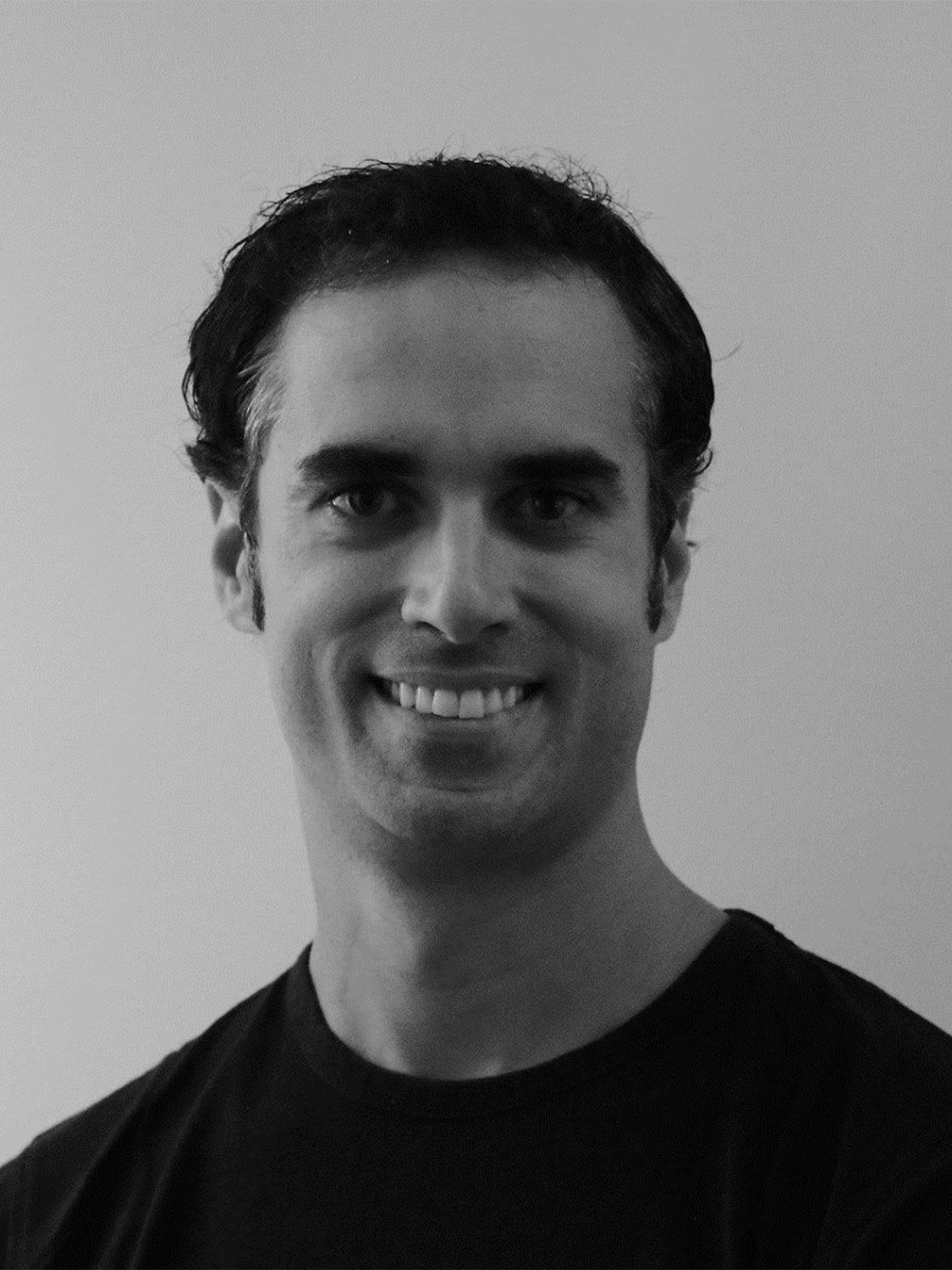
In the restoration of severely damaged teeth, when there is insufficient tooth structure, the clinician may consider 2 options: surgical crown lengthening or orthodontic extrusion. An alternative treatment approach could be surgical extrusion procedure that is mainly based on moving the affected tooth area to a supragingival position, leaving sound tooth structure exposed supra-alveolarly, providing space for the reestablishment of the biologic width.
When a tooth has been non-surgically retreated and disease persists, the option for saving the tooth is often based on performing an apical micro-surgery. However, apical surgery may be contraindicated because of anatomic factors, thick bone, periodontal attachment loss or some medical conditions. Intentional replantation is the treatment of choice for some of these cases. In the case of teeth that are not restorable or with a poor prognosis, the options include no treatment (wait and see), extraction and replacement using a single-tooth implant, a fixed dental prosthesis or a removable dental prosthesis and tooth auto transplantation if an appropriate donor tooth is available. As opposed to dental implants, an auto transplanted tooth presents several advantages including proprioception from the periodontal ligament, continuous skeletal growth, and potential betters’ esthetics, especially in growing patients. Surgical extrusion, intentional replantation and tooth auto-transplantation have been well known clinical procedures in the past, supported by scientific evidence and numerous clinical studies. The advent of titanium implant rehabilitation has reduced the use of these successful treatments in daily practices and the present average clinical perception is of a riskful treatment, which, in the major percentage of the cases, can evolve in ankylosis and / or resorption. This perception is due to the confusion of data coming from traumatology studies of replantation of traumatically avulsed teeth, in which biological and clinical conditions are completely different. The new trend in extreme conservation and preservation of natural sound tissues is leading to a rediscovery of these kind of treatments. This presentation is based on current clinical and scientific evidence and aims to provide dentists a detailed background, clinical procedures, and the outcome of these procedures and to compare them with other alternatives.
Dr. Francesc Abella graduated in 2005 in dentistry at the Universitat Internacional de Catalunya (Barcelona), Spain. From 2005 to 2014 he completed his master’s degree and PhD doctoral Degree in Endodontic at Universitat Internacional de Catalunya, Spain. Currently, he is the Director of the European Master's Degree in Endodontics (program accredited by the European Society of Endodontology).
Dr. Abella has given several lectures, courses, and hands-on courses worldwide and he also works in a private practice limited to endodontics and restorative dentistry in Barcelona. In clinical endodontics his areas of special interest include cone-beam computed tomography (CBCT) in Endodontics, microcomputed tomography, dental anatomy, dental traumatology, periapical pathology, adhesive restorations, restoration of root-canal-treated teeth, and autotransplantion and replantation techniques.
Beside his work in private practice he is lecturing on Endodontics throughout Spain and other countries, is actually involved in endodontic research projects in the post-graduate endodontic program of the Universitat Internacional de Catalunya, Spain. He is author of several papers in peer-reviewed journals. Part of the expert committee convened by the European Society of Endodontology (ESE) on the use of CBCT. Dr. Abella is also an active member of the Spanish Association of Endodontics (AEDE) and currently secretary of the Spanish Society of Conservative and Aesthetic Dentistry (SEOC).

The management of deep caries lesions in vital teeth is still controversial, and the treatment selection enormously differs among clinicians. Several minimal invasive alternatives have been proposed such as indirect pulp capping, stepwise removal, or selective caries removal to soft dentin, although root canal treatment remains as a common option. Selective caries removal to soft dentin reduces the risk of pulp exposure, allows to maintain pulp vitality and to restore the tooth in one session, being re-entering unnecessary. In this lecture, the indications for this treatment will be reviewed as well as the factors that may influence its success. Moreover, the clinical procedure will be described and the selection of the material to cover the softened dentin will be discussed. Finally, drawbacks will also be exposed such as limited bond strength to the altered dentin, mechanical compromise of the restored tooth, pulpal pathology, or radiographical misinterpretation.
Laura Ceballos obtained her DDS in 1997 and her PhD in 2001 at University of Granada in Spain. During her PhD formation she stayed abroad at the University of Texas, Health Science Center in San Antonio, at the School of Dentistry, Medical College of Georgia in Augusta, and at the Bauru School of Dentistry, University of Sao Paulo. As post-doctoral fellow researcher she broadened her skills at the Instituto Superior Técnico, University of Lisbon, Portugal. In 2003, she moved to Madrid, as Interim Associate Professor, to teach Dental Materials in the newly created Degree in Dentistry at the Rey Juan Carlos University. In the following years, she added Dental Pathology and Conservative Dentistry to her teaching duties, while being promoted to Associate Professor in 2007 (Professor Titular de Universidad) and Full Professor in 2019 (Catedrático de Universidad). She founded a postgraduate course of “Expert in Esthetic Dentistry” in 2007, that ran until 2015 and, also, a Master in Esthetic Restorative Dentistry and Endodontics that began in 2009.
Recently, she founded a Research Group, named IDIBO (Development and Research in Dental Biomaterials (https://gestion2.urjc.es/pdi/grupos-investigacion/idibo), with the Rey Juan Carlos University official recognition.
She has focused her research activity on the field of Adhesive Dentistry, including laboratorial and clinical studies. Her publications can be conferred at https://orcid.org/0000-0002-6024-9559. Many of them are related to doctoral theses that she supervised and have been presented mainly at IADR meetings, ConsEuro meetings, also those organized by SEOC (Spanish Society of Conservative Dentistry). She was member of the Board, Vice-President, or President of SEOC. She is also part of the Executive Commission of the European Federation of Conservative Dentistry (EFCD) on behalf of SEOC. Finally, she represents Spain and Portugal in the Board of the Continental European Division of the IADR.

In 2022, the hybrid layer turns 40 years old. Indeed, Nakabayashi et al., (1982) published the first article about the hybrid-layer formation theory, although Kramer and McLean in 1952 already observed a resin-penetrated zone within the resin-dentine interface created by the glycerolphosphoric acid dimethacrylate. This latter monomer was a revolutionary idea of Oscar Hagger (in 1949), who introduced it within the formulation of the Sevriton Cavity Seal; he had in fact invented a first sort of self-etching adhesive. Nowadays, most of the direct and indirect bonding procedures rely on the chemical bonding properties of functional monomers present in modern resin-based materials. However, even though dental adhesive systems have improved considerably over the last twenty years, several issues regarding premature reductions in bond strength, interface and marginal degradation are still a matter of concern. This lecture will attempt to bring together a number of demonstrations to show the current state of the art on the bonding durability. Moreover, Innovative new approaches to remineralize the resin-dentine interface may protect hybrid layers from different types of degradations over time and have a therapeutic role in caries prevention.
Dr. Sauro is currently professor in dental biomaterials and minimally invasive dentistry at the “Departamento de Odontología, Facultad de Ciencias de la Salud, Universidad CEU-Cardenal Herrera”, coordinator of the "Dental Research" and Director (Principal Investigator) of the research group "In Situ Dental Tissues Engineering and Minimally Invasive Therapeutic Adhesive Rehabilitation".
He is also honorary senior lecturer, at the Faculty of Dentistry, King's College London Dental Institute (KCLDI), Visiting Professor at the Sechenov University of Moscow, School of Dentistry, Moscow, Russia and honorary Professor at the dental school - University of Hong Kong.
He obtained his Ph.D in "Dental Biomaterials Research Pre-clinical Dentistry" at King's College London Dental Institute London, where he continued his scientific work as post-doctorate and then as research associate in "Adhesive dentistry and dental bioactive materials research".
Dr. Sauro has been working in dental biomaterials, preventive and minimally invasive dentistry research for 15 years (JCR - H-Index: 35) and he has published, in collaboration with internationally renowned researchers, more than 120 articles in international peer-review journals with high impact in the dental and biomaterials field, along with more several research abstracts and lectures in international conferences.
Professor Sauro is currently the president elect of the Dental Materials Group (DMG) at the International Association of Dental Research (IADR). He is also part of the "editorial board" of several peer-review Journals.

The reduction in the carious disease has directed our restorative efforts toward new pathologies such as tooth wear or bio-mechanical failures of non-adhesively restored posterior teeth, related to extended periods of function and parafunctions. The bio-mechanicals implications of normal and abnormal occlusal stresses on fragilized teeth represents then a considerable clinical challenge in today’s dentistry as we strive for more conservative and durable treatment strategies.
Optimal restorative scenarios will then rely on proper evaluation of the residual tooth structure quality (vitality or non-vitality), pulpal status (absence of symptom absence or pain to pressure, sensitivity to cold or pulpitis), amount of hard tissues loss and presence / extent of cracks to assess which material, preparation approach and restorative technique shall be applied. Direct and indirect techniques must be used, depending on the aforementioned criteria, with or without preparation, depending on the tooth stabilization and reinforcement needs.
This program will overview diagnosis elements, decision criteria and clinical protocols related to the various, specific bio-mechanical conditions of the “cracked tooth syndrome” and non-vital teeth.
Dr. Didier Dietschi was licensed in 1984 and got his doctoral and Privat Docent degrees in 1988 and 2004, respectively, at the University of Geneva, Switzerland. He also got a PhD degree in 2003 at the University of ACTA, Netherlands. Following a 6-year period of full-time teaching and research activity in Operative Dentistry and Periodontology, he started a part time activity in a private office in Geneva, dedicated to aesthetic restorative dentistry. He holds now positions of adjunct Professor at CASE Western University (USA) and senior lecturer at the University of Geneva.
Dr. Dietschi has published over 115 clinical and scientific papers and book chapters on adhesive and aesthetic restorations; he also co-authored the book “Adhesive Metal-free Restorations”, edited in 1997 by Quintessence and translated in 7 languages. Dr. Dietschi is internationally acclaimed for his theoretical and practical teaching programs on adhesive & aesthetic restorations.

Durable adhesion of glassy matrix or oxide-based ceramics is crucial especially for minimally invasive reconstructions. This lecture will highlight the fundamental principles of adhesion to different ceramics, cover current knowledge and the clinical protocols regarding to surface conditioning methods and adhesion promoters to be used in conjunction with different resin-based materials in luting and repair procedures.
Mutlu Özcan has earned her Dentistry Licentiate in 1993 in Istanbul, Turkey, Dr. med. dent. degree in 1999 in Cologne, Germany. After working as an invited visiting researcher at the University of Turku, Finland between 2000-2002, she did her Doctorate in Medical Sciences (PhD) in 2003 in Groningen, The Netherlands and appointed to be a full professor for Clinical Dental Biomaterials at the University of Groningen, The Netherlands in 2007.
Since 2009, she is the Head of Division of Dental Biomaterials at the Clinic for Reconstructive Dentistry, University of Zurich, Switzerland. She also holds Honorary Professorship positions at various universities some of which are São Paolo State University (Brazil), University of Florida (USA), and University of Hong Kong (China).
She has authored more than 700 ISI Web of Science indexed original scientific and clinical publications, is a well-sought lecturer, receiver of several international awards, and serves for the editorial boards of numerous scientific journals.
She is European Prosthodontic Association (EPA)-recognized Specialist in Prosthodontics, Honorary Secretary of the EPA, Past-President of the International Association of Dental Research (IADR)/Dental Materials Group (DMG), Fellow of Academy of Dental Materials (FADM), Fellow of International College of Dentistry (FICD), and Fellow in Dental Surgery of the Royal College of Physicians and Surgeons of Glasgow, FDS RCPS (Glasgow).
Prof. Özcan is the recipient of the prestigious “2018 IADR Distinguished Scientist Wilmer Souder Award”.
Her clinical expertise is on reconstructive dentistry and her scientific work focuses on translational and clinical research with a particular emphasis on the development and application of dental biomaterials.

Esthetic and restorative management of localized enamel defects presents a unique clinical challenge. Originally developed for the non-invasive treatment of incipient approximal carious lesions, the resin infiltration technique has become increasingly popular for the management of post-orthodontic white spots, localized hypomineralizations and even mild to moderate fluorosis. This presentation will review a wide spectrum of clinical situations, where the infiltration concept can be implemented with high levels of success and esthetic outcomes. Current concepts and challenges of the resin infiltration technique will be discussed on variety of well-documented, step-by-step case presentations.
Dr. Cehreli is professor of Pediatric Dentistry at Hacettepe University, where he has been for most of his career. He has published extensively in peer-reviewed journals, has co-authored in several book chapters, and his publications have been cited extensively. He is director of the International Association of Dental Traumatology (IADT) and currently chairs the Education Committee of the IADT. He is an active member of the American Academy of Pediatric Dentistry, International Academy of Paediatric Dentistry and International Association of Dental Research. Dr. Cehreli has received several national and international awards in research. His clinical and research interests include pediatric endodontics, dental traumatology pediatric and pediatric esthetic dentistry, and has delivered over 50 International and 150 National invited lectures and many Hands-on courses.
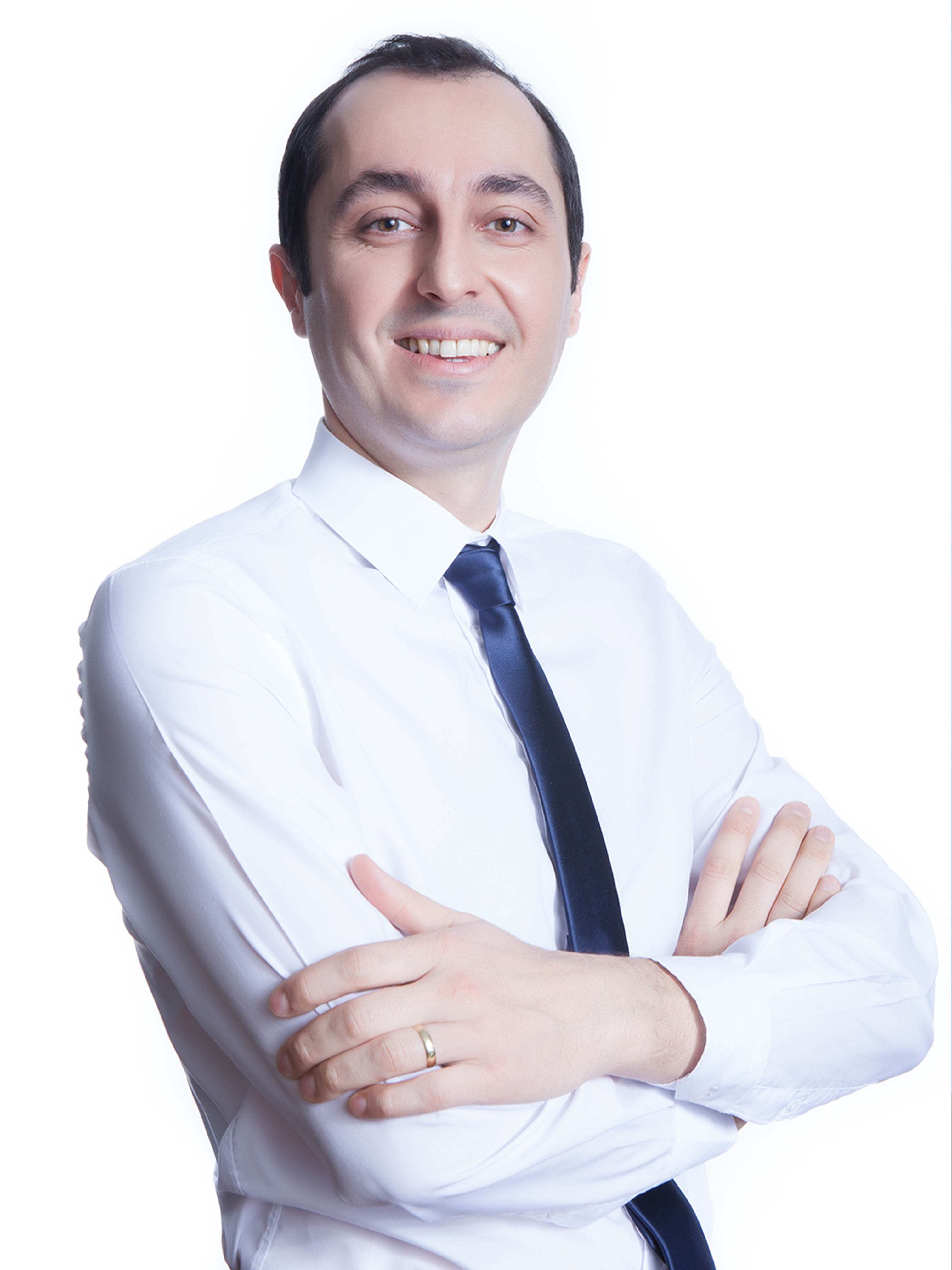
Parafunctional habits and loss of occlusal vertical dimension due to erosion have been faced frequently, nowadays. In many of these cases, esthetic concern related with enamel loss together with this situation also play a role in the anterior region. Such cases can be rehabilitated fast and minimally invasively with the aid of a strong adhesion of durable and esthetic restorative materials. However, in order for this treatment alternative requiring high precision and strong adhesion to be successfully practiced, a perfect workflow is necessary. In this presentation, a digital protocol characterized by prep less occlusal veneers and ultrathin anterior laminate veneers will be described on a patient with reduced occlusal vertical dimension as well as having esthetic problems. Materials and tooth preparation techniques with minimally invasive approach will also be discussed.
M. Erhan Çömlekoğlu is a graduate of Ege University, School of Dentistry where he received his DDS degree. He attended Prosthesis Program of Graduate Study offered by Institute of Health Sciences at Ege University and graduated with Ph.D. degree at Prosthodontics. He is a professor and resident at the Department of Prosthodontics, School of Dentistry at Ege University, İzmir, Turkey.
He completed several scientific projects supported by national and international institutions. He was honored more than 30 national and international scientific awards. With these projects he authored more than 70 articles in peer-reviewed scientific journals in the field of adhesive and implant dentistry and established CAD/CAM restorative laboratory at the dental school.
His clinical practice is limited to Prosthodontics at the Department of Prosthodontics, School of Dentistry, Ege University. Dr. Çömlekoğlu is intensely involved in scientific research regarding adhesive dentistry and implant dentistry. His current research interest particularly covers implant-periodontium interactions and their clinical outcomes.

Esthetics has become a major concern for today’s people and having a pleasing smile is one of the primary reasons to request dental treatment. Esthetic dentistry provides numerious opportunities to improve the white and pink esthetics in harmony. Lasers are high-tech instruments which offer surprising comfort for patients and opportunity for tissue-friendly applications in esthetic dentistry when compared to conventional methods.
The aim of this lecture is to provide an overview about the current laser assisted esthetic dentistry applications with a critical perspective and to discuss their outcomes. The most recent evidence-based clinical protocols will be described for laser assisted tooth bleaching, crown lengthening, gingivoplasty, gingival depigmentation, frenectomy and papilla reconstruction procedures with case presentations.
Esra Ergin was born in Ankara, Turkey. She graduated from the Hacettepe University School of Dentistry (2004) and started her PhD education at the Restorative Dentistry Department of the same University. She had been at Aachen Dental Laser Centre (AALZ)/Germany for her PhD thesis and laser education in 2007. She got her PhD degree with the thesis entitled “Micro Tensile Bond Strength of an Etch&Rinse; Adhesive to Enamel and Dentin after Er:YAG Laser Treatment with Different Pulse Durations” in 2009. She became Assistant Professor (2012), Associated Professor (2014) and Professor (2019) at Hacettepe University, Faculty of Dentistry, Department of Restorative Dentistry. She continues her studies in the same department and Hacettepe University Dental Laser Research and Application Centre as vice director. She is a member of Turkish Society of Restorative Dentistry, the World Federation for Laser Dentistry (WFLD) and the board member of the Turkish Association of Lasers in Dentistry. She has published more than 70 peer-reviewed articles and several book chapters. Her clinical and research interests focus on laser assisted dentistry applications, esthetic dentistry, clinical performance of dental materials and MI dentistry.

In today’s dentistry regardless of how complex a case is, the patients will not be happy if the final aesthetic outcome will not fit their expectations. Therefore, it is imperative that outlines of the final smile design should be communicated with the patient even before the treatment planning is decided and approved. For an aesthetically and functionally successful case this is mandatory and called the PRE-VISUALISATION. The dentist should never start any procedure without visualizing the final result at the very beginning of the whole treatment.
However, to pre-visualize the final smile design in the mouth, in 3D, it needs certain tasks to be realized. Going back to basics, the simplistic approach to that will be the application of the direct mock up in the mouth. Even though it appears to be a simple task, in reality in order to get a true realistic design, that needs an experienced dentist with high skill levels, and followed by the wax up stage which needs another experienced technician with high skill levels.
The next step will be to have the final design that should be applied in to the patients mouth in 3D with all the final details as the APT (Aesthetic Pre-evaluative Temporaries) whether it be an analog or digital wax up.
In veneer or crown and bridge cases this can be applied just before the preparation of the teeth, where as in more complex cases like implant or ortho combined prostho cases this should be used as a treatment planning tool.
Dr. Galip Gurel graduated from the University of Istanbul, Dental School in 1981. He continued his education at the University of Kentucky, Department of Prosthodontics. Received his MSc degree from Yeditepe University in, Istanbul.
Dr. Gurel is the founder and the honorary president of EDAD (Turkish Academy of Aesthetic Dentistry). He was the President of the European Academy of Esthetic Dentistry (EAED) for 2011 & 2012.
He received “The Smigel” award in October 2014 which is granted biennially by New York University College of Dentistry to honor the best esthetic dentists in the world for the social contribution they create, their support for the improvement of esthetic dentistry, their vision and determination and their ability to present innovative ideas around dentistry globally and the education they provide to the dental health professionals about advanced esthetics, technology and the new techniques in general dentistry.
He is also a member of the American Society for Dental Aesthetics (ASDA) and American Academy of Restorative Dentistry (AARD) and the honorary diplomate of the American Board of Aesthetic Dentistry (ABAD).
He is also the editor-in-chief of the Quintessence Magazine in Turkey and on the editorial board of the AACD journal, PPAD (Practical Procedure & Aesthetic Dentistry), EJED (European Journal of Esthetic Dentistry).
He has been lecturing on dental aesthetics all over the world and giving post graduate lectures on aesthetics dentistry.
He is a visiting professor at the New York University (USA), Marseille Dental University (France) and Istanbul Yeditepe University (Turkey).
He is the author of “The Science and Art of Porcelain Laminate Veneers” published by Quintessence publications in 2003 translated into 12 different languages.
He has been practicing in his own clinic in Istanbul, specializing in Aesthetic Dentistry, since 1984.
A renown sportsman, Dr. Gurel has been the Captain of the Turkish National Team of Water Polo for 110 times, a World Champion of the Camel Trophy and a participant of the Paris-Dakar Rally.

In recent years, stronger need for esthetics and growing cosmetic demand for a pleasing smile has made many individuals, more conscious of the black or dark patches of pigmentation on the facial aspects of gingiva that may be strikingly apparent during smile and speech.
This lecture will be present the comparison of the depigmentation techniques in the literature and will demonstrate the clinical efficacy of a new depigmentation technique in the elimination of gingival melanin pigmentation.
Dr. Cem Yıldız graduated from Gazi University, Faculty of Dentistry in 2001, then graduated his PhD program in 2007 at Gazi Faculty of Dentistry, Department of Periodontology.
He is an international speaker and fellow at International Team for Oral Implantology (ITI), and a Study Club Coordinator of the ITI Turkey and Azerbaijan Section. He is an active member at European Federation of Periodontology and Turkish Periodontology Association. He is also a board member of Turkish Academy of Esthetic Dentistry.
He has various local and foreign papers especially periodontal regeneration, periodontal esthetic and dental implantology. He is attending to various local and international scientific meetings as a guest speaker and giving courses in oral implantology and periodontology topics.
He is proceeding his clinical work on periodontal treatment, periodontal regeneration, bone regeneration, implantology and aesthetic dentistry.
He has been pursuing his career in his private clinic since 2002.

This lecture will provide a review and practical update on the prevention of dental caries in the older adult using the practice-based minimum intervention oral care (MIOC) delivery framework.
Aims and Objectives
This lecture will provide an overview of the scientific and clinical evidence base for implementation of the four interlinked domains of the minimum intervention oral care (MIOC) framework used in caries prevention in the older adult. Clinical case examples will help demonstrate some of the latest evidence-based clinical techniques for primary, secondary and tertiary caries prevention including its minimally invasive management and will include the following subject areas:
By the end of this lecture delegates will be able to enhance patient care by optimizing all aspects of the caries prevention pathway using minimum intervention oral care (MIOC) principles for older adults.
Avijit is Professor of Cariology & Operative Dentistry / Hon. Consultant and Clinical Lead, Restorative Dentistry at the Faculty of Dentistry, Oral & Craniofacial Sciences, King’s College London / Guy’s & St. Thomas’ Hospitals Foundation Trust, London, UK. He holds the positions of Chair / Head of Conservative & MI Dentistry and Programme Director of the innovative KCL blended-learning Masters in Advanced Minimum Intervention Restorative Dentistry (open to dentists and therapists globally: google “KCL AMID” for more info). He also leads the Cariology & Operative Dentistry research programme at the QS-ranked world’s top 5 Faculty of Dentistry (as part of the Centre of Oral & Clinical Translational Science), researching, publishing and lecturing internationally about minimum intervention oral healthcare delivery and minimally invasive operative caries management, adhesive dental biomaterials and clinical trials (>130 publications, >£2.5 million research grant income, supervision of 5 post-doctorate, 17 doctorate and 24 masters students to date). He has been appointed to the NIHR Clinical Research Network, as Oral & Dental Health Specialty Lead for South London where he is responsible for the development of primary care clinical trials and their professional / participant recruitment programmes. He acts as an international R&D; KOL for many international Industry partners, including GCE / UK, 3M Oral Healthcare, Septodont France / UK, Dentsply Sirona, Colgate and P&G; Oral B. Avijit is primary author of Pickard’s Guide to Minimally Invasive Operative Dentistry (9th & 10th editions; OUP, 2015), a definitive and globally respected text in its field, amongst other book editorships (Minimally Invasive Esthetics, Elsevier (2015), Odell’s Problem Solving in Dentistry, 4th ed, Elsevier (2020)) and chapter contributions (including, amongst others, caries management in The Principles of Endodontics 3rd ed, 2019). He is editor-in-chief of Oral Health & Preventive Dentistry (Quintessence Ltd) and an editorial board member of Dental Update, British Dental Journal, International Journal of Adhesion & Adhesives and the Primary Dental Journal. He is a member of the British Dental Association Health & Science Committee also, all whilst maintaining wet-fingered specialist clinical practice in Restorative Dentistry, Prosthodontics & Periodontics. He is the immediate past-President of the BDA Metropolitan Branch London Section (2019-20) and currently holds an Hon. Consultant Advisor post to the Office of the Chief Dental Officer, England.

In today’s dentistry regardless of how complex a case is, the patients will not be happy if the final aesthetic outcome will not fit their expectations. Therefore, it is imperative that outlines of the final smile design should be communicated with the patient even before the treatment planning is decided and approved. For an aesthetically and functionally successful case this is mandatory and called the PRE-VISUALISATION. The dentist should never start any procedure without visualizing the final result at the very beginning of the whole treatment.
However, to pre-visualize the final smile design in the mouth, in 3D, it needs certain tasks to be realized. Going back to basics, the simplistic approach to that will be the application of the direct mock up in the mouth. Even though it appears to be a simple task, in reality in order to get a true realistic design, that needs an experienced dentist with high skill levels, and followed by the wax up stage which needs another experienced technician with high skill levels.
The next step will be to have the final design that should be applied in to the patients mouth in 3D with all the final details as the APT (Aesthetic Pre-evaluative Temporaries) whether it be an analog or digital wax up.
In veneer or crown and bridge cases this can be applied just before the preparation of the teeth, where as in more complex cases like implant or ortho combined prostho cases this should be used as a treatment planning tool.
Dr. Galip Gurel graduated from the University of Istanbul, Dental School in 1981. He continued his education at the University of Kentucky, Department of Prosthodontics. Received his MSc degree from Yeditepe University in, Istanbul.
Dr. Gurel is the founder and the honorary president of EDAD (Turkish Academy of Aesthetic Dentistry). He was the President of the European Academy of Esthetic Dentistry (EAED) for 2011 & 2012.
He received “The Smigel” award in October 2014 which is granted biennially by New York University College of Dentistry to honor the best esthetic dentists in the world for the social contribution they create, their support for the improvement of esthetic dentistry, their vision and determination and their ability to present innovative ideas around dentistry globally and the education they provide to the dental health professionals about advanced esthetics, technology and the new techniques in general dentistry.
He is also a member of the American Society for Dental Aesthetics (ASDA) and American Academy of Restorative Dentistry (AARD) and the honorary diplomate of the American Board of Aesthetic Dentistry (ABAD).
He is also the editor-in-chief of the Quintessence Magazine in Turkey and on the editorial board of the AACD journal, PPAD (Practical Procedure & Aesthetic Dentistry), EJED (European Journal of Esthetic Dentistry).
He has been lecturing on dental aesthetics all over the world and giving post graduate lectures on aesthetics dentistry.
He is a visiting professor at the New York University (USA), Marseille Dental University (France) and Istanbul Yeditepe University (Turkey).
He is the author of “The Science and Art of Porcelain Laminate Veneers” published by Quintessence publications in 2003 translated into 12 different languages.
He has been practicing in his own clinic in Istanbul, specializing in Aesthetic Dentistry, since 1984.
A renown sportsman, Dr. Gurel has been the Captain of the Turkish National Team of Water Polo for 110 times, a World Champion of the Camel Trophy and a participant of the Paris-Dakar Rally.

Esthetic and restorative management of localized enamel defects presents a unique clinical challenge. Originally developed for the non-invasive treatment of incipient approximal carious lesions, the resin infiltration technique has become increasingly popular for the management of post-orthodontic white spots, localized hypomineralizations and even mild to moderate fluorosis. This presentation will review a wide spectrum of clinical situations, where the infiltration concept can be implemented with high levels of success and esthetic outcomes. Current concepts and challenges of the resin infiltration technique will be discussed on variety of well-documented, step-by-step case presentations.
Dr. Cehreli is professor of Pediatric Dentistry at Hacettepe University, where he has been for most of his career. He has published extensively in peer-reviewed journals, has co-authored in several book chapters, and his publications have been cited extensively. He is director of the International Association of Dental Traumatology (IADT) and currently chairs the Education Committee of the IADT. He is an active member of the American Academy of Pediatric Dentistry, International Academy of Paediatric Dentistry and International Association of Dental Research. Dr. Cehreli has received several national and international awards in research. His clinical and research interests include pediatric endodontics, dental traumatology pediatric and pediatric esthetic dentistry, and has delivered over 50 International and 150 National invited lectures and many Hands-on courses.

Parafunctional habits and loss of occlusal vertical dimension due to erosion have been faced frequently, nowadays. In many of these cases, esthetic concern related with enamel loss together with this situation also play a role in the anterior region. Such cases can be rehabilitated fast and minimally invasively with the aid of a strong adhesion of durable and esthetic restorative materials. However, in order for this treatment alternative requiring high precision and strong adhesion to be successfully practiced, a perfect workflow is necessary. In this presentation, a digital protocol characterized by prep less occlusal veneers and ultrathin anterior laminate veneers will be described on a patient with reduced occlusal vertical dimension as well as having esthetic problems. Materials and tooth preparation techniques with minimally invasive approach will also be discussed.
M. Erhan Çömlekoğlu is a graduate of Ege University, School of Dentistry where he received his DDS degree. He attended Prosthesis Program of Graduate Study offered by Institute of Health Sciences at Ege University and graduated with Ph.D. degree at Prosthodontics. He is a professor and resident at the Department of Prosthodontics, School of Dentistry at Ege University, İzmir, Turkey.
He completed several scientific projects supported by national and international institutions. He was honored more than 30 national and international scientific awards. With these projects he authored more than 70 articles in peer-reviewed scientific journals in the field of adhesive and implant dentistry and established CAD/CAM restorative laboratory at the dental school.
His clinical practice is limited to Prosthodontics at the Department of Prosthodontics, School of Dentistry, Ege University. Dr. Çömlekoğlu is intensely involved in scientific research regarding adhesive dentistry and implant dentistry. His current research interest particularly covers implant-periodontium interactions and their clinical outcomes.

In recent years, stronger need for esthetics and growing cosmetic demand for a pleasing smile has made many individuals, more conscious of the black or dark patches of pigmentation on the facial aspects of gingiva that may be strikingly apparent during smile and speech.
This lecture will be present the comparison of the depigmentation techniques in the literature and will demonstrate the clinical efficacy of a new depigmentation technique in the elimination of gingival melanin pigmentation.
Dr. Cem Yıldız graduated from Gazi University, Faculty of Dentistry in 2001, then graduated his PhD program in 2007 at Gazi Faculty of Dentistry, Department of Periodontology.
He is an international speaker and fellow at International Team for Oral Implantology (ITI), and a Study Club Coordinator of the ITI Turkey and Azerbaijan Section. He is an active member at European Federation of Periodontology and Turkish Periodontology Association. He is also a board member of Turkish Academy of Esthetic Dentistry.
He has various local and foreign papers especially periodontal regeneration, periodontal esthetic and dental implantology. He is attending to various local and international scientific meetings as a guest speaker and giving courses in oral implantology and periodontology topics.
He is proceeding his clinical work on periodontal treatment, periodontal regeneration, bone regeneration, implantology and aesthetic dentistry.
He has been pursuing his career in his private clinic since 2002.
DR. IMAD ABOUT
DR. MICHAEL DIETER
DR. GOTTFRIED SCHMALZ
DR. ROBERTO SORRETINO
DR. MARCO VENEZIANI
DR. BAS LOOMANS
DR. SALVATORE SAURO
DR. DIDIER DIETSCHI
DR. ZAFER ÇEHRELİ






